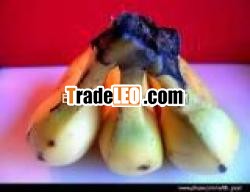Description:
IQF Banana is prepared by processing fresh fruit which has beencleaned, washed, properly drained, sorted, and inspected.Bananas are known for their potassium content. One large banana,contains about 600 mg of potassium and only carries 140 calories.That same large banana even has 2 grams of protein and 4 grams offiber. Vitamins and minerals are abundant in this fruit, offering123 I.U.s of vitamin A. A full range of B vitamins are present with.07 mg of Thiamine, .15 mg of Riboflavin, .82 mg Niacin, .88 mgvitamin B6, and 29 mcg of Folic Acid. There are 13.8 mg of vitaminC. On the mineral scale Calcium counts in at 9.2 mg, Magnesium 44.1mg, with trace amounts of iron and zinc.
Historically, they were not the sweet yellow banana we knowtoday, but the red and green cooking variety, now usually referredto as plantains to distinguish them from the sweet type. The yellowsweet banana is actually a mutant strain of the green and redcooking bananas, discovered in 1836 by Jamaican Jean FrancoisPoujot. He found that in his plantations, one plant was bearingyellow fruits rather than red or green. Upon tasting the newdiscovery, he found it to be sweet in its raw state, without theneed for cooking. He quickly began cultivating this sweetvariety.
Bananas became widespread in the 19th and 20th centuries duelargely to the United Fruit Company. Today, they grow in mosttropical and subtropical regions with the main commercial producersincluding Mexico, Costa Rica, Brazil and Ecuador.
Nutritional Benefits:


